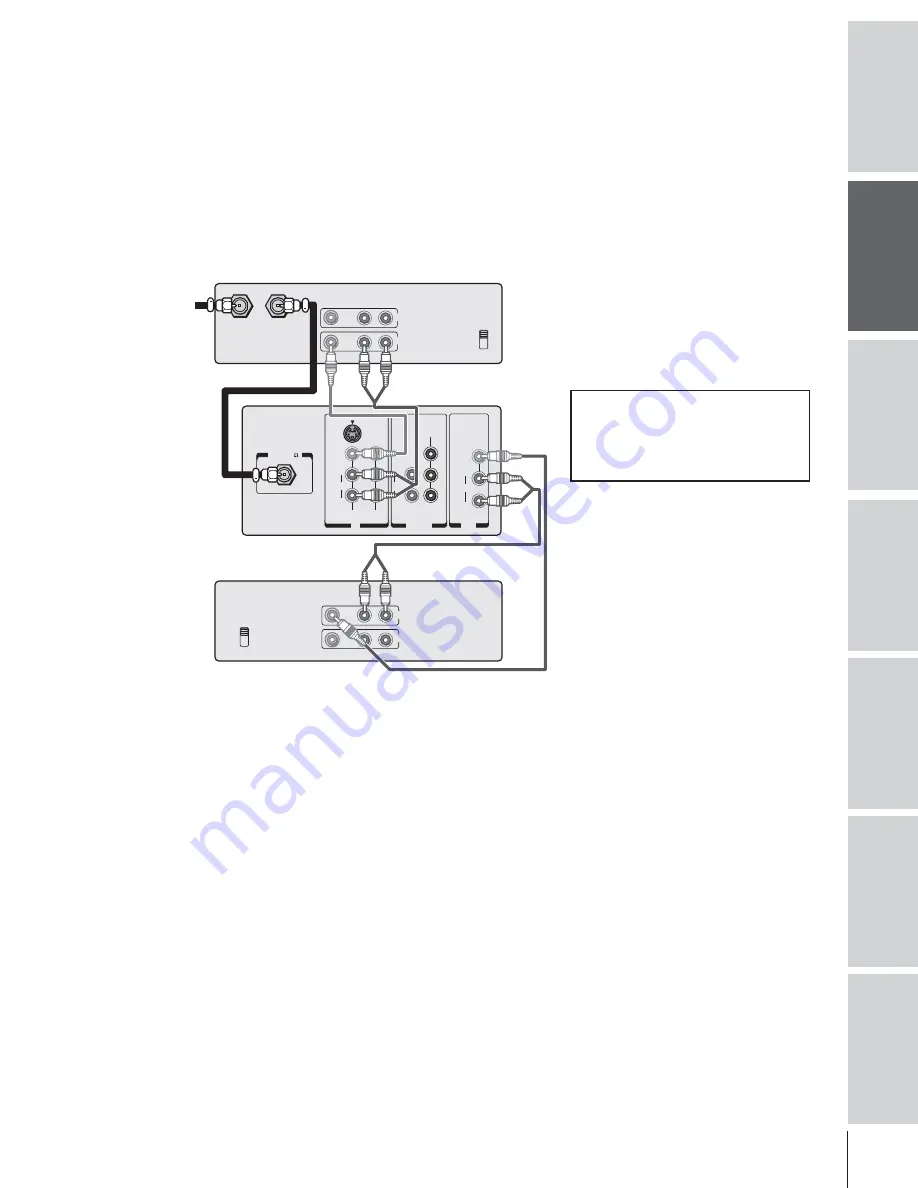
11
Intr
oduction
Connecting
y
our T
V
Using the
Remote Contr
ol
Setting up
y
our T
V
Using the T
V
’s
F
eatur
es
Appendix
Index
VIDEO AUDIO
CH 3
L
R
CH 4
IN
OUT
VIDEO AUDIO
CH 3
L
R
CH 4
IN from ANT OUT to TV
IN
OUT
ANT( 75 )
OUT
IN
S-VIDEO
VIDEO
VIDEO 1
VIDEO 2
L /
MONO
AUDIO
R
DVD IN
P
R
P
B
Y
COLOR
STREAM
INPUT
L
AUDIO
R
L /
MONO
AUDIO
R
VIDEO
Note:
•
Do not connect the same VCR to the
output and input connections on the TV
at the same time. (See the illustration at
left, which shows VCR1 connected to
VIDEO-1 IN on the TV, and VCR2
connected to A/V OUT on the TV.)
•
If your VCR has S-video, you can use an
S-video cable (plus the standard audio
cables) instead of a standard video cable
for better picture quality. Do not connect
both a standard video cable and an S-video
cable to VIDEO-1 (or VIDEO-3) at the
same time, or the picture performance will
be unacceptable.
•
To dub or edit, VCR 2 must select Line IN,
and the TV must select VIDEO-1.
VCR 1 (plays)
From
Cable,
Cable Box,
or Antenna
TV
VCR 2 (records)
Connecting two VCRs
This connection allows you to record (dub/edit) from “VCR 1” to
“VCR 2” (as illustrated below) while watching the videotape. You also
can record from one TV channel while watching another channel.
You will need:
• two coaxial cables
• two sets of standard A/V cables
The unauthorized recording, use, distribution,
or revision of television programs, videotapes,
DVDs, and other materials is prohibited under
the Copyright Laws of the United States and
other countries, and may subject you to civil
and criminal liability.
Summary of Contents for 32AF14
Page 46: ...46 Notes ...












































